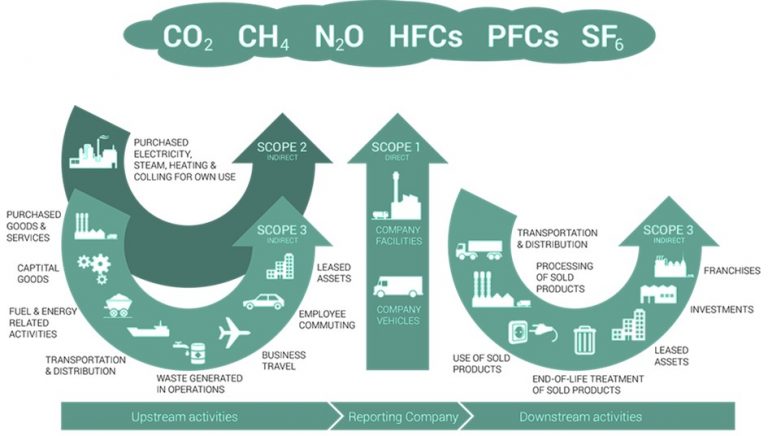It is time for a new era of corporate climate action – one that is based on the most up-to-date science. In more and more sectors, the calculation of carbon footprints and setting science-based targets is becoming the standard, as for example, customers are increasingly interested in the carbon footprint of their products. Today, it is expected from companies of all sizes to define clear goals on the topics of sustainability, environmental, and climate protection and to implement their commitment through clearly recognizable strategies. But what is the carbon footprint and science-based targets all about? How does the greenhouse gas calculation work? And last but not least, what benefits can your company gain from it? We are happy to be able to assist you with expert advice and action in leading the way to a zero-carbon business, stimulating innovation, and driving sustainable growth by setting ambitious, science-based emissions reduction targets.
What are science-based targets?
Targets are considered “science-based” if they are in line with the level of necessary emissions reductions to keep global temperature increase below 2°C compared to pre-industrial temperatures. They furthermore show companies how much and how quickly they need to reduce their GHG emissions to prevent environmental harm which causes climate change. But setting science-based targets is not just about fighting climate change – it is in companies’ own interests.
In order to determine the impact of a company and its products on the climate, the amount of CO2 and other greenhouse gases released that drive global warming is determined. An emission balance includes at least the emissions from own vehicles and facilities, as well as those from purchased energy. These core areas are referred to as “Scope 1” and “Scope 2“. A complete balance sheet, however, also includes the emissions of the so-called “Scope 3“, i.e. all upstream and downstream areas of the value chain. In addition to purchased raw materials and supplies, this includes, for example, business trips and employee commuting, waste disposal, and purchased services.
Calculating your company’s Carbon Footprint
For the calculation, one could of course examine each individual item in detail – but practice shows that this is time-consuming and mostly unnecessary. In order to keep the calculation of the Carbon Footprint within a reasonable timeframe, another approach has been developed: Detailed data is collected for the most important items, while items with a low total share are estimated on the basis of references and projections and marked with a margin of error. This allows the company’s CO2 efficiency to be monitored over several years, even with changing economic conditions and fluctuating incomes. The Corporate Carbon Footprint thus provides a very good overview of a company’s ecological “problem zones” and potentials for improvement.
Carbon Footprinting as a competitive advantage
Companies that act now and set ambitious greenhouse gas reduction efforts today will gain competitive advantages in the decades to come. A carbon footprint of the company or individual products is increasingly requested by customers and sometimes even plays a role in the awarding of contracts. At the same time, it is the entry point to fact-based sustainability management and makes it possible to work with solid figures in external communication. Furthermore, gains in efficiency lead to cost savings, convincing targets strengthens a company’s reputation, leads to innovation, and transformational change, which can unlock opportunities for growth.
Supporting you with setting your science-based targets and calculation of your Carbon Footprint
We at Leadership & Sustainability can support you with defining your SBTs and calculating the greenhouse gas balances for your company or individual products. We would be very happy to help you in this area. Please feel free to contact us here if you would like to work with us. If you would like to learn more about our expertise in calculating carbon footprints and setting science-based targets, we recommend this presentation.
Best regards
Karin & Team










Leave a Comment